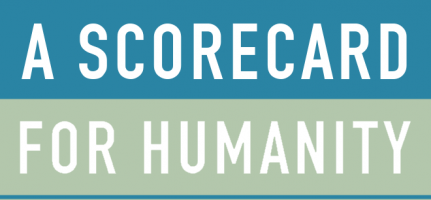A Scorecard for Humanity: Human Health, Jamison Jha et al
Assessment Paper
A version of the working paper is available for download here. The finalized paper has been published in How Much Have Global Problems Cost the World? A Scorecard from 1900 - 2050 by Cambridge University Press.
By Dean T. Jamison, Prabhat Jha, Varun Malhotra, and Stéphane Verguet and released as a chapter in How Much Have Global Problems Cost the World?

One of the biggest improvements to the biggest number worldwide is in health. Life expectancy hardly changed before the late 18th century. Yet it is hard to overstate the magnitude of the improvement since 1900, from a life expectancy of 32 years to 69 now, to 76 in 2050. The biggest factor was the fall in infant mortality.
Take one overlooked example. In 1970, only some 5% of infants were vaccinated against measles, tetanus, whooping cough, diphtheria and polio. By 2000 it was 85%, saving about three million lives a year -- more, each year, than world peace would have saved in the 20th century.
Yes, childhood mortality is still high in sub-Saharan Africa but in 2008 was only a third of that of richer Liverpool in 1870. It is likely to drop by another 50% by 2050.
Economic terms give the clearest summary. The cost of poor health at the outset of the 20th century was a phenomenal 32% of global GDP. Today, it is down to about 11%, and by 2050 will have halved again.
Better health is excellent news by itself but a striking revelation of this study is that technical progress (like antibiotics, vaccinations and oral rehydration therapy) accounts for 68% of the massive recent improvement, while higher income accounts for only 3%; even having more doctors only accounts for 12%. This shows that poor people can leapfrog to better health, giving hope to billions.
Short summary
The 20th century saw life expectancy rise by about 3 months for every calendar year. This extraordinary transformation of mortality is chiefly, but not exclusively, a result of the creation and widespread use of specific technologies. What was the value of this transformation? And what then are the implications for this century?
First, by any reasonable measure of value, the value of the health gains in the past century has been enormous.
Second, ongoing investments in widely applicable treatments and policies remain the best engine of future reductions. Specifically, the ongoing investments in child health and infectious disease control should continue to make possible the creation of new powerful interventions, and ongoing operations research and public support for child health should enable the use of these interventions much more widely. In contrast, the future looks less rosy for adult health. The costs of achieving adult survival are rising each year, in part due to the effects of the tobacco and HIV epidemic. Moreover, the major enterprise of public support, research attention, and wide spread operations research remain scanty at best. Nowhere is this demonstrated more powerfully than for tobacco taxation. A worldwide coordinated major increase in tobacco taxation is not hard to make practicable- the only obstacles are widespread indifference or misunderstanding of tobacco hazards among the public and politicians, and well-organized and funded opposition from the tobacco industry. Similar widely cost-effective strategies focused on long term management with combination drugs for heart attacks and strokes are also widely practicable.
The third major implication has to do with institutions. Previous careful reviews have supported worldwide efforts to accelerate research on neglected and unfinished agendas (such as selected tropical diseases) and on chronic diseases. To some extent, the major philanthropy of the Bill & Melinda Gates Foundation will continue research on promising interventions for child health and infectious diseases, although there are limitations to how the foundation chooses and funds innovations. Major institutions, are, as seen above, central to gains in health. Similar efforts and philanthropy are needed for chronic diseases.
Finally, while mostly beyond the scope of this chapter, a re-think in developmental assistance around health is required. Given income growth, and increased affordability (at least of child health interventions), it can be fairly argued that most funding for delivery of effective interventions should be the responsibility of governments as well as major global funds (such as the Global Fund for AIDS, Tuberculosis and Malaria or the Global Alliance for Vaccines and Immunization). This suggests that a substantial part of traditional bilateral aid, such as by USAID or the UK DFID, should be re-directed to operations research as well as to chronic disease intervention research. Facilitating the application and diffusion of new health technologies and policies will yield the highest return on the aid dollar.

